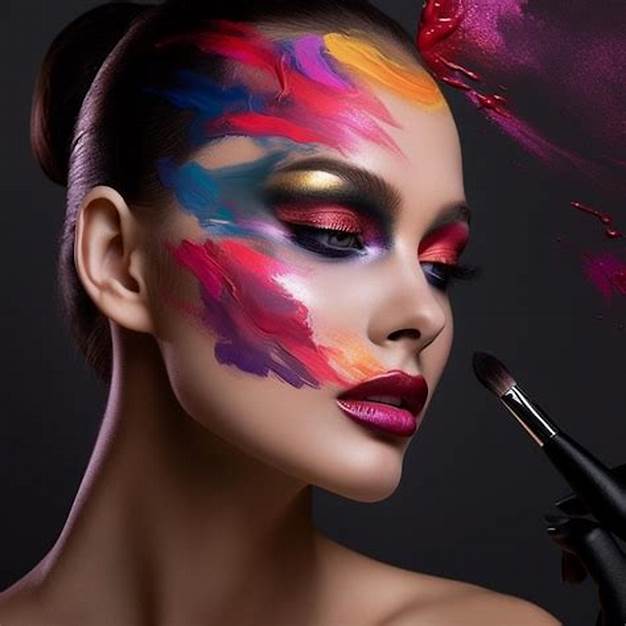Beauty and Fashion in the United Kingdom
Introduction
The United Kingdom has long been considered a beacon of fashion and beauty. First the classic elegance of British tailoring to the ever-evolving makeup trends born in London’s creative quarters, the UK continues to inspire and shape global standards of style. It’s a land where tradition and modernity blend seamlessly, producing a unique aesthetic that’s both refined and rebellious. This article explores the multifaceted world of beauty and fashion in the United Kingdom, looking at its history, iconic influencers, regional styles, and its bold leap into the future.
A Brief History of British Fashion
British fashion has always stood at the crossroads of heritage and innovation. In the 19th century, Savile Row set the gold standard for men’s tailoring—a legacy that endures to this day. Furthermore the post-war 1950s saw the emergence of structured, feminine silhouettes, while the 1960s ushered in the mod movement led by designers like Mary Quant. Her invention of the mini skirt captured a new wave of youth rebellion.
The 1970s and 80s saw punk rock explode into the fashion scene, largely thanks to icons like Vivienne Westwood. With safety pins, tartan prints, and leather, she challenged societal norms and created an anti-fashion movement that’s still influential today. Fast forward to the 1990s and early 2000s, British designers like Alexander McQueen and Stella McCartney took the runway by storm, blending drama with high-end craftsmanship.
Beauty Trends Through the Decades
British beauty trends have always been diverse and driven by both high fashion and street culture. In the 1960s, Twiggy’s dramatic eye makeup, complete with exaggerated lashes, became a global sensation. The 1980s embraced boldness—think bright blue eyeshadow and thick eyeliner, often inspired by pop stars like Boy George.
Today, British beauty celebrates individuality. From the no-makeup makeup look to bold, editorial styles seen in magazines like Dazed and i-D, there’s an appreciation for both simplicity and experimentation. Skincare, too, has taken center stage, with homegrown brands like Charlotte Tilbury and Elemis earning international acclaim.
London: The Fashion Capital
London is arguably the heart of UK fashion. It’s a city known for its cutting-edge creativity, multicultural flair, and fearless street style. Oxford Street, Bond Street, and Carnaby Street are popular destinations for fashion enthusiasts, while London Fashion Week showcases both established designers and emerging talent.
Londoners have a reputation for mixing vintage with designer pieces, often using fashion as a form of protest or identity. The city’s fashion culture is dynamic and ever-changing, constantly influenced by music, politics, and art.
Regional Styles Across the UK
While London is a fashion hub, the rest of the UK also boasts rich and diverse style sensibilities:
- Manchester is known for its indie and rave-inspired fashion. The city’s youth culture has had a strong influence on casual sportswear and retro aesthetics.
- Birmingham blends urban streetwear with multicultural influences, creating a vibrant and bold style.
- Glasgow and Edinburgh offer a mix of punk, heritage wear, and modern minimalism, often with a strong DIY fashion ethos.
- Cardiff reflects a mix of tradition and modernity, with a growing number of local designers adding Welsh flair to contemporary styles.
Influential British Fashion Designers
The UK has given the world some of the most visionary designers:
- Vivienne Westwood: The queen of punk fashion.
- Alexander McQueen: Known for his theatrical runway shows and impeccable tailoring.
- Stella McCartney: A leader in sustainable fashion.
- Burberry: Though a brand rather than a person, Burberry’s trench coat remains an iconic symbol of British elegance.
Beauty Influencers and Brands
In the digital era, beauty influencers like Patricia Bright, Nikkie Tutorials (based in Europe with UK influence), and Amelia Liana have captivated millions. However these content creators set trends, review products, and inspire their followers to explore new looks.
The UK is also home to a variety of beauty brands that have made waves globally:
- Charlotte Tilbury: Known for luxurious packaging and universally flattering products.
- Rimmel London: A high-street staple for affordable, trend-driven makeup.
- No7: Pioneers in combining skincare and cosmetics.
- The Ordinary: Although Canadian-owned, its major fanbase in the UK has helped normalize ingredient-focused skincare.
The Rise of Sustainable Fashion and Beauty
The UK is at the forefront of the sustainability movement in fashion and beauty. Brands are becoming more transparent, with an emphasis on ethical sourcing, cruelty-free testing, and recyclable packaging. After designers like Stella McCartney have led the charge, and movements like Fashion Revolution, which began in the UK after the Rana Plaza disaster, have brought global awareness to fast fashion’s impact. Cause & effect Consumers are also driving this change. After that a growing trend toward slow fashion, vintage shopping, and DIY styling. In beauty. Moreover people are opting for refillable packaging, vegan products, and brands that prioritize environmental health.
Fashion and Beauty in British Pop Culture
Finally british pop culture has always played a significant role in shaping fashion and beauty ideals. From the Spice Girls’ iconic 90s looks to Harry Styles’ gender-fluid wardrobe, celebrities often push the envelope and redefine what’s acceptable. In the other hand TV shows like Love Island and Peaky Blinders have also impacted everyday style—from summer dresses and bold lashes to tweed jackets and slicked-back hairstyles.
Conclusion
Beauty and fashion in the United Kingdom are as complex and varied as the country itself. They embody a deep respect for tradition, a thirst for innovation, and an unshakable belief in self-expression. Whether through the impeccable structure of a Savile Row suit or the bold eyeliner worn in the streets of London, the UK’s style identity is timeless yet constantly evolving. As the world becomes more connected, British fashion and beauty will undoubtedly continue to lead, inspire, and challenge global standards for years to come.
